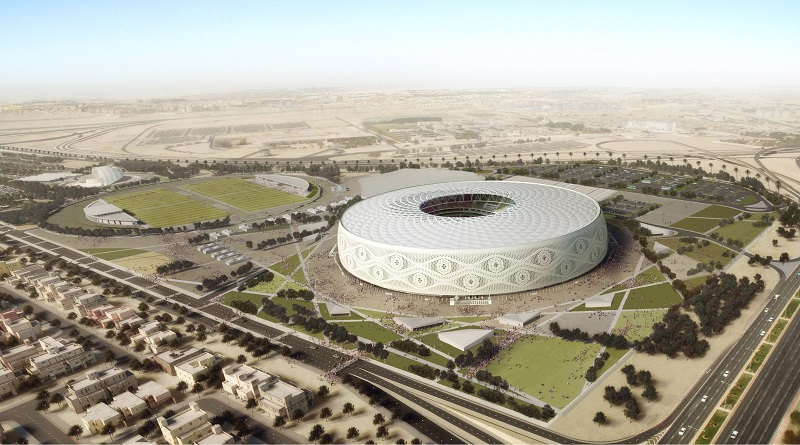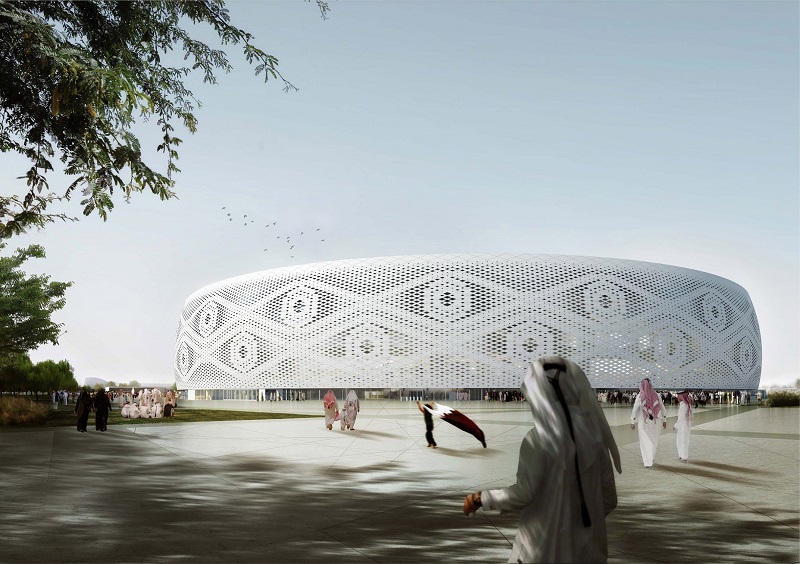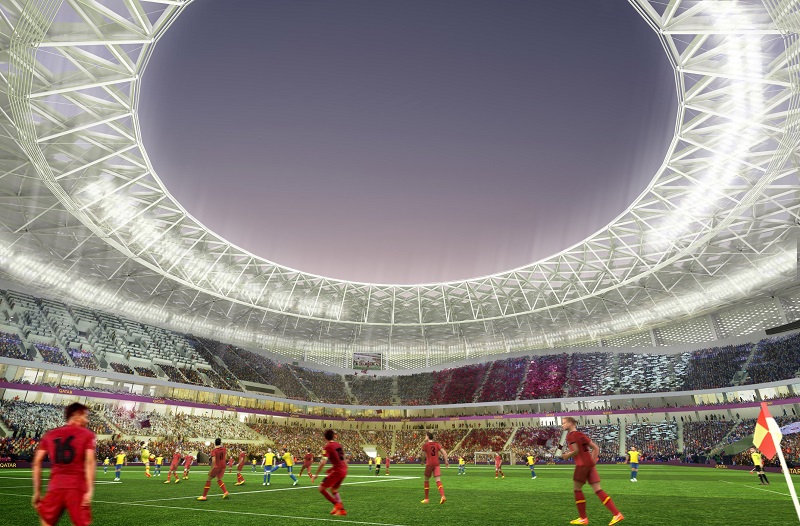Al Thumama Stadium, Qatar
In August 2017, designs for a football stadium to be built for Qatar’s 2022 World Cup were unveiled.
Designed by Qatari architect Ibrahim M. Jaidah, the stadium has a diamond-patterned exterior based on the gahfiya, a tightly-fitted knitted cap traditionally worn by Arab men. The diamond-shaped perforations on the circular stadium’s exterior form larger rhombic shapes with rounded forms in between. A circular opening in the roof, together with modern cooling systems, will enable it to be used for sporting events all-year round.
The stadium will seat 40,000 spectators, and is the most central of the 8 venues for the 2022 tournament.
However, the event continues to be mired in controversy, with the ongoing Gulf crisis threatening to limit air space around Qatar, and prohibiting the passage of goods through Saudi Arabia. In addition, there are continuing charges from human rights groups who claim migrant workers have been abused and exploited. An investigation by The Guardian in 2014, found that more than 500 Indian migrants and 382 Nepalese nationals had died since 2012 building the infrastructure for the event.
The stadium is to be built by AlJaber Engineering and Turkish construction company Tekfen, with an expected completion date of 2020.
The other 7 stadiums are currently under construction, including the stadium that will host the opening and closing ceremonies, designed by Foster + Partners, and the Al Wakrah stadium designed by Zaha Hadid Architects.
According to Jaidah; "The reveal of Al Thumama Stadium design comes with immense pride in having contributed to the delivery of the first World Cup in the history of Qatar and the region. The inspiration behind the design comes in line with Qatar's hosting promise that this World Cup will be one for the region to celebrate. I believe it will be a stadium design that resonates with the Arab community, and we are extremely proud to have designed this innovative venue."
[edit] Related articles on Designing Buildings Wiki
Featured articles and news
International Electrician Day, 10 June 2025
Celebrating the role of electrical engineers from André-Marie Amperè, today and for the future.
New guide for clients launched at Houses of Parliament
'There has never been a more important time for clients to step up and ...ask the right questions'
The impact of recycled slate tiles
Innovation across the decades.
EPC changes for existing buildings
Changes and their context as the new RdSAP methodology comes into use from 15 June.
Skills England publishes Sector skills needs assessments
Priority areas relating to the built environment highlighted and described in brief.
BSRIA HVAC Market Watch - May 2025 Edition
Heat Pump Market Outlook: Policy, Performance & Refrigerant Trends for 2025–2028.
Committing to EDI in construction with CIOB
Built Environment professional bodies deepen commitment to EDI with two new signatories: CIAT and CICES.
Government Grenfell progress report at a glance
Line by line recomendation overview, with links to more details.
An engaging and lively review of his professional life.
Sustainable heating for listed buildings
A problem that needs to be approached intelligently.
50th Golden anniversary ECA Edmundson apprentice award
Deadline for entries has been extended to Friday 27 June, so don't miss out!
CIAT at the London Festival of Architecture
Designing for Everyone: Breaking Barriers in Inclusive Architecture.
Mixed reactions to apprenticeship and skills reform 2025
A 'welcome shift' for some and a 'backwards step' for others.
Licensing construction in the UK
As the latest report and proposal to licence builders reaches Parliament.
Building Safety Alliance golden thread guidance
Extensive excel checklist of information with guidance document freely accessible.
Fair Payment Code and other payment initiatives
For fair and late payments, need to work together to add value.
Pre-planning delivery programmes and delay penalties
Proposed for housebuilders in government reform: Speeding Up Build Out.
High street health: converting a building for healthcare uses
The benefits of health centres acting as new anchor sites in the high street.



























